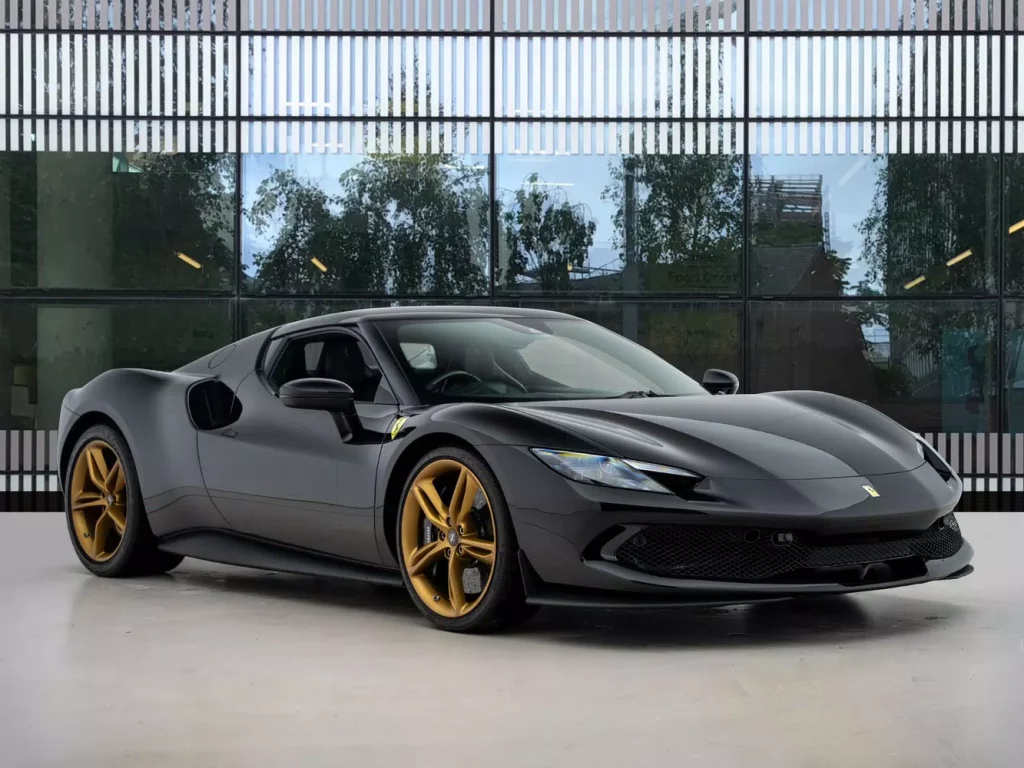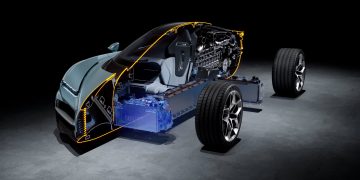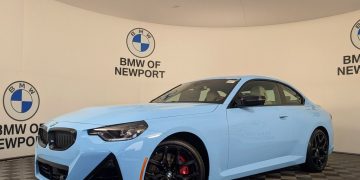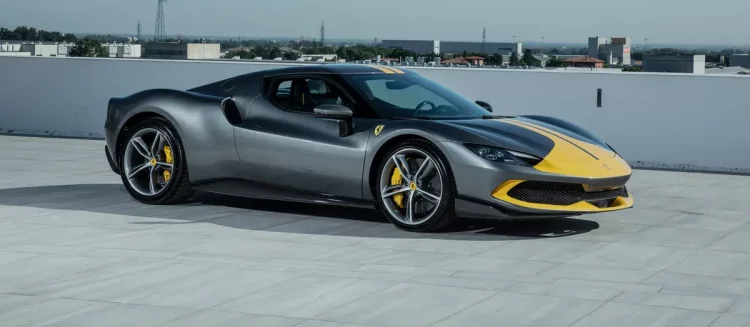Introduction: Ferrari’s Cultural Impact Beyond the Road
Ferrari is not just an automotive brand; it is a global symbol of luxury, performance, and elite engineering. Since its inception in 1939, Ferrari has transcended the role of a mere car manufacturer to become an influential force in automotive culture. The brand’s cars are much more than fast machines; they represent a lifestyle, a status symbol, and a deep connection to motorsport. Ferrari’s cars are as much about their engineering excellence and performance prowess as they are about desire, prestige, and exclusivity.
This article seeks to answer the question: How has Ferrari shaped automotive culture and influenced the global car industry? From the Ferrari Formula 1 legacy to its influence on luxury sports cars and supercars, Ferrari’s innovation, brand appeal, and cultural relevance have left an indelible mark on the world of cars. Through its distinct blend of high-performance engineering, exquisite design, and an unparalleled customer experience, Ferrari has become a cultural icon, one that drives desire and inspiration in car enthusiasts and consumers worldwide.
1. Ferrari’s Birth and Its Connection to Racing Culture
Enzo Ferrari: The Visionary Behind the Legend
The story of Ferrari begins with Enzo Ferrari, a man whose passion for cars and racing laid the foundation for what would become one of the most successful and iconic automotive brands in history. Born in Modena, Italy, in 1898, Ferrari’s early experiences in racing deeply influenced the brand’s future direction.
Scuderia Ferrari, founded in 1929, was initially a racing team for Alfa Romeo before it evolved into a manufacturer of its own cars. Ferrari’s early philosophy focused not only on building fast cars but also on pushing the limits of engineering and innovation in motorsport. Ferrari’s success on the racetrack, especially in Formula 1, became a cornerstone of the brand’s identity, shaping the company’s approach to performance cars for the road.
The Intersection of Racing and Road Cars
One of Ferrari’s most significant cultural contributions is the link between its racing heritage and road cars. Ferrari has been a dominant force in Formula 1 for decades, and this motorsport pedigree directly influences the performance, engineering, and design of its road-going models. Ferrari’s commitment to engineering high-performance, race-bred cars for the road was revolutionary—this marriage of track technology with luxury road cars was rare and created a unique automotive niche.
The racing success of Ferrari has helped build a cultural mythos around its brand. A Ferrari isn’t just a car—it’s a living legend shaped by years of racing excellence. From the Ferrari 166 MM to the Ferrari 488 Pista, every road-going Ferrari reflects the engineering and design innovations forged on the racetrack.
2. Ferrari’s Design Philosophy: Aesthetic Excellence and Functionality
Timeless Aesthetic Appeal: Ferrari’s Iconic Design Language
Ferrari’s design philosophy has always been to create cars that are not only high-performance machines but also works of art. The brand’s design has evolved over the years, but its cars always maintain a classic and timeless appeal that sets them apart from other manufacturers.
Ferrari’s cars are characterized by aerodynamic curves, bold lines, and sculpted bodywork, which not only contribute to enhanced performance but also create an unmistakable visual identity. The brand has collaborated with prestigious design houses like Pininfarina and Scaglietti, which helped shape the iconic silhouettes of many Ferrari models.
The Ferrari 250 GTO is perhaps one of the best examples of Ferrari’s design prowess, representing the perfect fusion of functionality and beauty. Its smooth, flowing curves and aggressive stance make it a standout in automotive history, and its design continues to influence sports car design today.
Designers and Collaborations: Ferrari’s Role in Shaping Automotive Aesthetics
Ferrari’s collaboration with Pininfarina and other famous designers has helped shape automotive design culture. These collaborations are more than just technical achievements; they reflect Ferrari’s commitment to blending artistry with engineering. The timeless beauty of Ferrari’s models has helped establish the brand as a trendsetter in automotive design, with many of its cars becoming cultural icons and sources of inspiration for car enthusiasts, designers, and manufacturers worldwide.
3. Ferrari and the Supercar Revolution: Setting the Benchmark for Performance
Ferrari’s Dominance in the Supercar World
Ferrari is synonymous with the term “supercar.” Since the introduction of models like the Ferrari 288 GTO and Ferrari F40, Ferrari has been at the forefront of the supercar revolution. These cars were among the first to push the boundaries of speed, performance, and aesthetics, setting benchmarks that other manufacturers strived to meet.
Ferrari’s supercars are renowned for their lightweight construction, raw power, cutting-edge technology, and racing-inspired engineering. The F40, for example, was the first road car to break the 200 mph barrier and remains one of the most revered Ferrari models in history. These supercars combined the brand’s racing heritage with the desire for luxury, setting the stage for the rise of the modern supercar.
Ferrari’s Focus on Performance and Handling
Ferrari has always focused on delivering not just power but precision and balance in its cars. The brand’s attention to detail in chassis design, suspension, and engine tuning ensures that Ferrari cars provide a driving experience that is both exhilarating and refined. The Ferrari 458 Italia, Ferrari LaFerrari, and Ferrari 812 Superfast all demonstrate Ferrari’s relentless pursuit of handling perfection, creating cars that are not only fast but also extremely engaging to drive.
Ferrari has raised the bar for what it means to own a high-performance car. For car enthusiasts, owning a Ferrari is not just about owning a car—it’s about becoming part of a legacy of track-winning engineering and unmatched precision.

4. Ferrari’s Role in Motorsports: Formula 1 and Endurance Racing
Formula 1 Legacy: Ferrari’s Motorsport Influence
Ferrari’s involvement in Formula 1 is one of the most influential aspects of the brand’s cultural impact. Since its debut in 1950, Ferrari has been a dominant force in F1, collecting multiple Constructors’ Championships and Drivers’ Championships along the way. Ferrari’s deep involvement in F1 has contributed immensely to the brand’s technical expertise and design evolution.
Ferrari’s F1 cars are technological marvels, integrating advanced aerodynamics, cutting-edge materials, and innovative powertrains. The knowledge gained from designing F1 cars is then transferred to Ferrari’s road cars, ensuring that every Ferrari is the result of extensive racing experience.
The brand’s Scuderia Ferrari team has created some of the most iconic cars in motorsport history, including the Ferrari 312T and the Ferrari SF90. These cars, alongside legendary drivers like Juan Manuel Fangio, Niki Lauda, Michael Schumacher, and Sebastian Vettel, have helped cement Ferrari’s reputation as a leader in motorsports.
Endurance Racing and Le Mans: Ferrari’s Heritage in Long-Distance Racing
Ferrari’s legacy in endurance racing, particularly in the 24 Hours of Le Mans, has also been pivotal in shaping the brand’s automotive culture. Ferrari’s involvement in endurance racing dates back to the early 1950s, and the brand has consistently performed well in events such as Le Mans and Daytona. Ferrari’s V12 engines and focus on reliability and speed have made the brand a favorite in long-distance races, further solidifying its engineering prowess.
Models like the Ferrari 250 GTO, Ferrari 330 P4, and Ferrari 512 TR were all built with the same attention to detail and racing technology that define Ferrari’s road-going cars.
5. Ferrari’s Cultural Symbolism: A Status Icon
Ferrari and Popular Culture: Cars as Symbols of Status
Ferrari cars have become ingrained in popular culture as symbols of wealth, status, and success. The brand’s cars are often portrayed in movies, television shows, and music, reinforcing the idea that owning a Ferrari is more than just owning a car—it’s a reflection of achieving the pinnacle of success.
From Ferris Bueller’s Day Off to The Wolf of Wall Street, Ferrari has been featured prominently in films as a symbol of power, luxury, and unattainable success. This cultural perception has only enhanced the brand’s exclusivity and desirability, making Ferrari one of the most sought-after automotive brands in the world.
Ferrari and Luxury Lifestyles: More Than Just a Car
Ferrari is also associated with an elite lifestyle. The brand’s exclusive customer experiences—such as private track days, tailored events, and the opportunity to customize one’s Ferrari through the Tailor Made program—add to its allure. Ferrari owners are part of a select group, and the experience of owning a Ferrari goes far beyond simply driving it.
Conclusion: Ferrari’s Lasting Impact on Automotive Culture
Ferrari has influenced automotive culture in ways that few other brands have. From its performance innovations and aesthetic designs to its status as a symbol of success and racing excellence, Ferrari has become more than just a car manufacturer—it is a cultural icon. Its passion for motorsport, engineering breakthroughs, and ability to create the ultimate luxury driving experience has set the stage for the development of the modern sports car and supercar industries.
As Ferrari continues to push boundaries with hybrid technology, electric cars, and advanced performance engineering, the brand’s influence on the automotive industry and culture will only grow. Ferrari’s legacy is not only about building exceptional cars—it is about creating a brand that stands as a testament to passion, innovation, and dreams realized.


































Discussion about this post